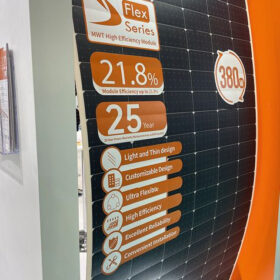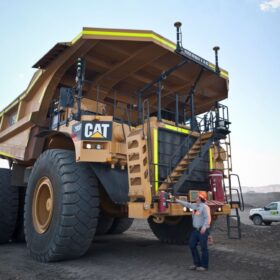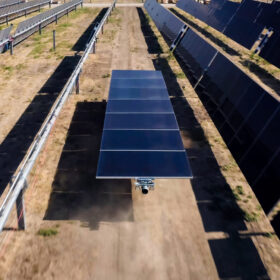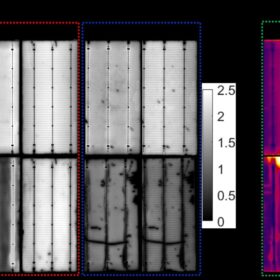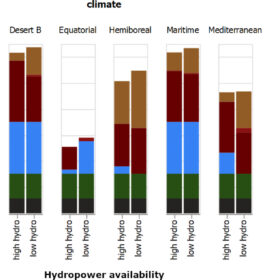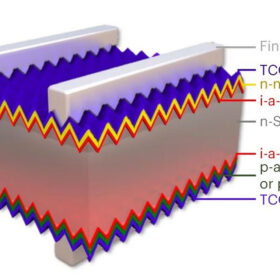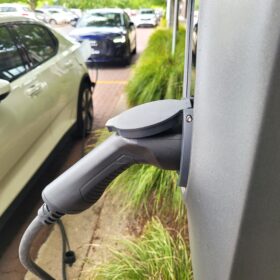Weekend read: Flex generation
A new generation of flexible, lightweight modules is entering the market. With back contact technology offering its own form of design flexibility and robustness, the new products could crack a hard-to-address market segment, as Jonathan Gifford explains.
Qcells builds pilot line for perovskite-silicon tandem PV cells in South Korea
Qcells says it is building a pilot line for perovskite-silicon tandem solar cells that will start operations later this year in South Korea. It is working closely with its team in Germany, where it has already established another pilot line for tandem cells.
GMG inks battery development deal with Rio Tinto
Queensland clean tech company Graphene Manufacturing Group has signed a deal with global mining giant Rio Tinto with the goal of accelerating the development and application of its graphene aluminium-ion battery technology in the mining and minerals industry.
Sharp unveils 570 W TOPCon solar panel with 22.07% efficiency
Sharp’s new IEC61215- and IEC61730-certified solar panel offers a power conversion efficiency of 22.07% and a bifaciality of more than 80%. The operating temperature coefficient is -0.30% per C and its power tolerance is 5%.
Australian gravity storage startup begins constructing R&D facility and digital twin in Port Kembla
Australian gravity storage startup Green Gravity will build an R&D facility Bluescope’s Port Kembla Steelworks. The company is aiming to prove its technology, which rests on moving weighted objects through disused mine shafts, via the facility with construction to begin this month.
Utility-scale solar installation goes automated
Powered by installation robots, on-site assembly line and digital twin software, the Terabase automated power plant construction system aims to boost productivity and cut construction costs.
Why Australia needs friends (and a climate AUKUS) to reach its climate goals
AUKUS has been widely hailed as Australia’s largest-ever defence investment and the Quad as a new focus for defence strategy – but what do they mean for our energy landscape? SMA’s Joshua Birmingham argues it’s time to look beyond defence cost and grow our relationships to fight the climate change war.
Australian scientists warn of heat-induced failure risks in HJT glass-backsheet PV modules
University of New South Wales researchers have identified four failure modes caused by damp heat in heterojunction solar panels with a glass-back sheet configuration. The failures could result in power losses ranging from 5% to 50%.
Electrolysis cost-efficient in all climates, says Finnish team
Researchers at the VTT Technical Research Centre of Finland said that chemical energy storages were needed for short and long-term balancing in every climate region, especially in the northern climates. Meanwhile, companies are moving forward with their plans to produce hydrogen in Namibia and Morocco.
A closer look at Longi’s world record-breaking, 26.81%-efficient heterojunction solar cell
An international research group led by Longi Central R&D Institute has published a paper describing Longi’s heterojunction solar cell based on a full-size silicon wafer that made a sensation in November, as it beat the long-lasting efficiency record held by Japanese manufacturer Kaneka for years. The researchers attributed the cell efficiency improvement to the implementation of a p-type amorphous silicon hydrogenated layer together with a modified transparent conductive oxides contact, which they said greatly reduced the cell contact resistivity.
